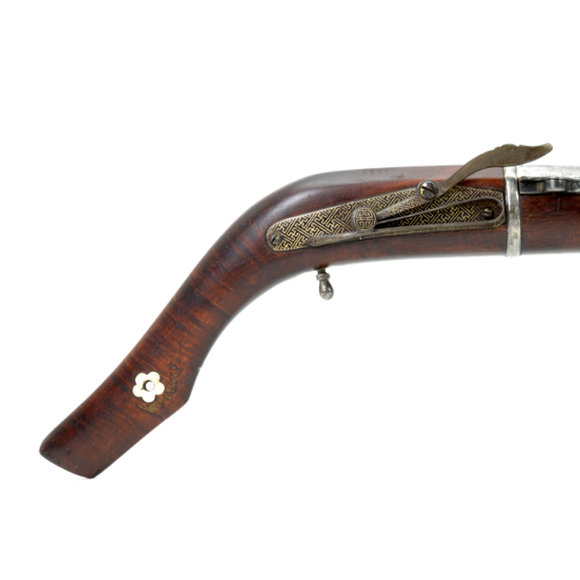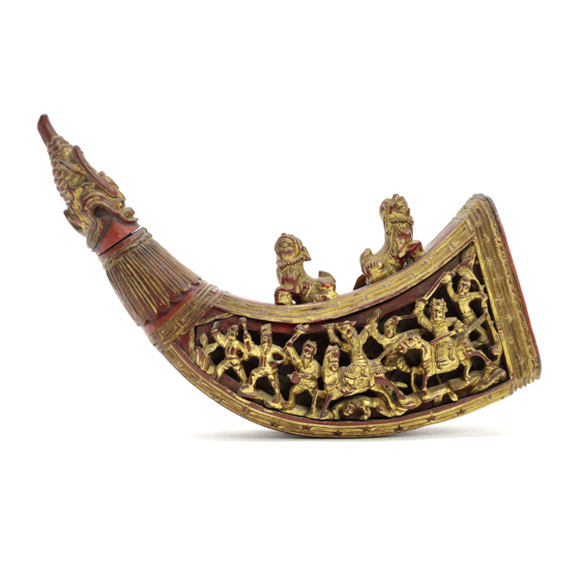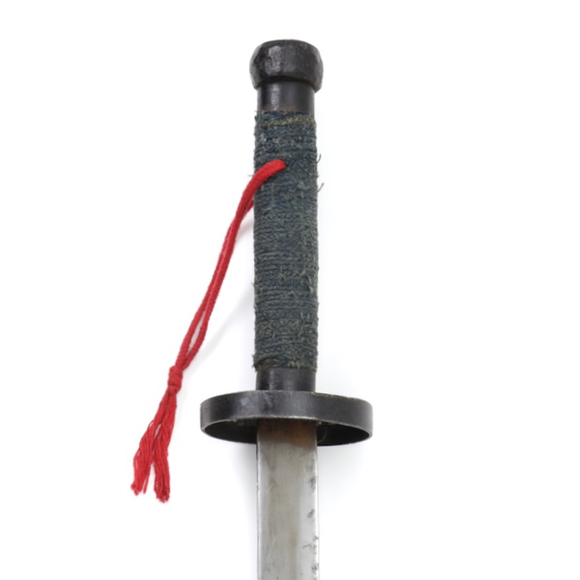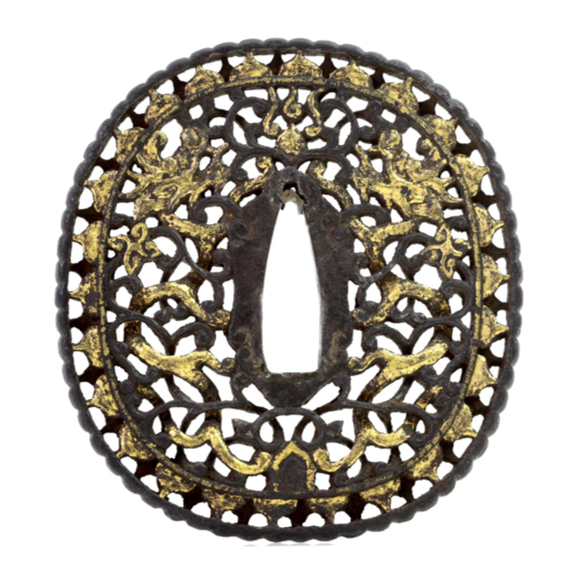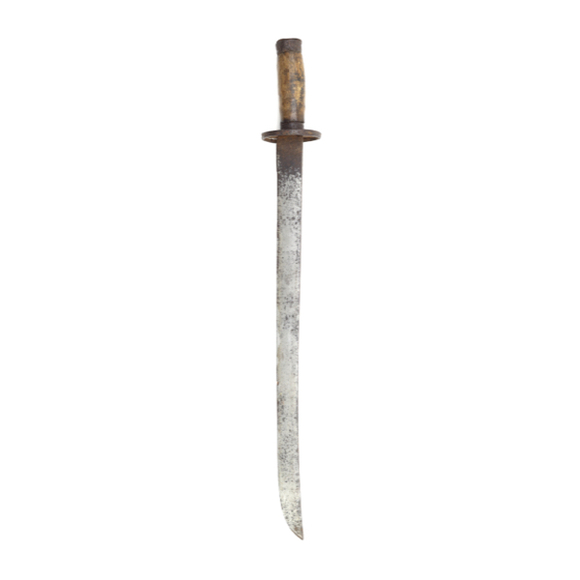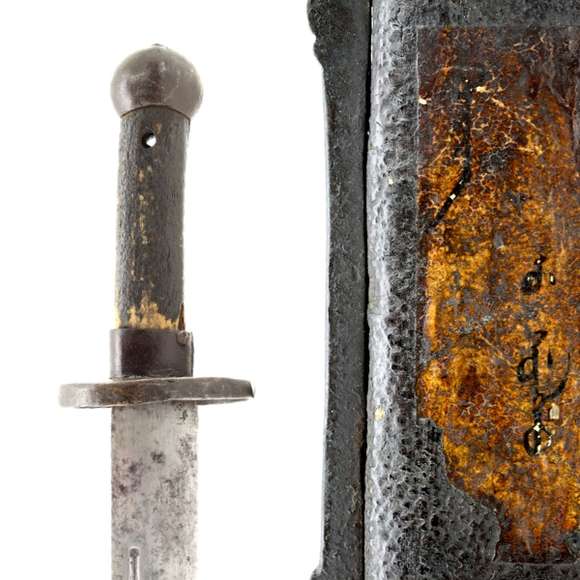Language: Mandarin Chinese
Source: Classical literature
Description
Dāoqiào kǒugū (鞘口箍) is the mouthpiece of a saber scabbard.1
During the Qing, they are usually made of iron or one of several copper alloys, usually brass. They came in two main styles, rounded with cloud-shaped cutouts, and angular.
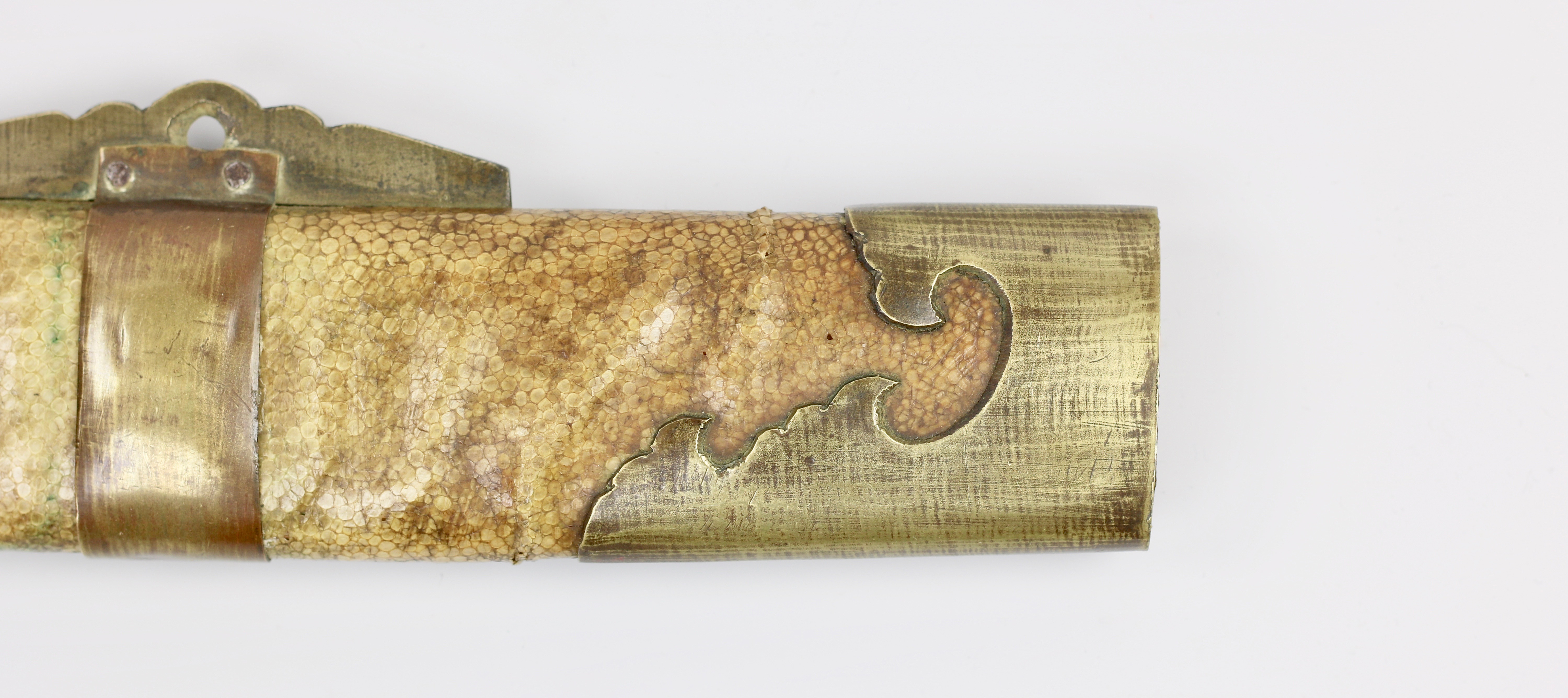
Scabbard mouthpiece of the round style on a late Qing military pattern saber.
Made of thick brass sheet.

Imperial style openwork mouthpiece of the angular style on an 18th century Chinese saber.
Made of gilt copper alloy.
The Qing saber scabbard is also fitted with:
-two suspension bands called dāoqiào zhōngshù (刀鞘中束), connected to:
-a suspension bar called dāo shùliáng (刀束樑) or qiàoshàng shuāngyǎn shù (鞘上雙眼束)
-the closed end is capped with a chape called dāoqiào bìshù (刀鞘庇束).2
Exceptions to this rule are very rare but are for example seen on some 19th-century southern bannerman sabers which tend to come in simpler all leather scabbards.
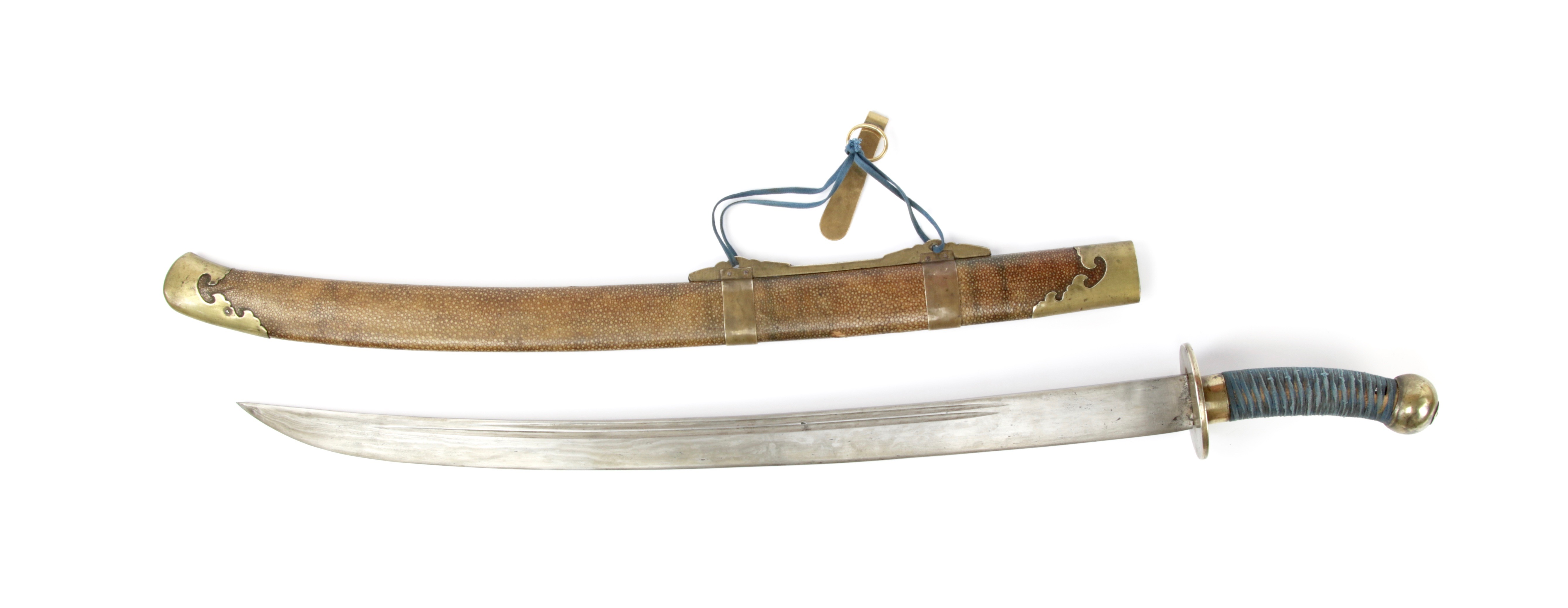
A standard Qing military pattern saber of the mid 19th century, with its round style scabbard.

An 18th century military saber with its angular style scabbard.
Also see
For a complete overview of saber terminology, see: A Chinese saber glossary.
References
1. Gongbu Junqi Zeli (工部軍器則例) or "Regulations and precedents on military equipment for the Board of Works" of 1815. A Qing imperial text dealing with the details of arms manufacture. The term found in the text is qiào kǒugū (鞘口箍) but following the logic of other terms from various sources, dāo (刀) can be added to make it saber-specific.

